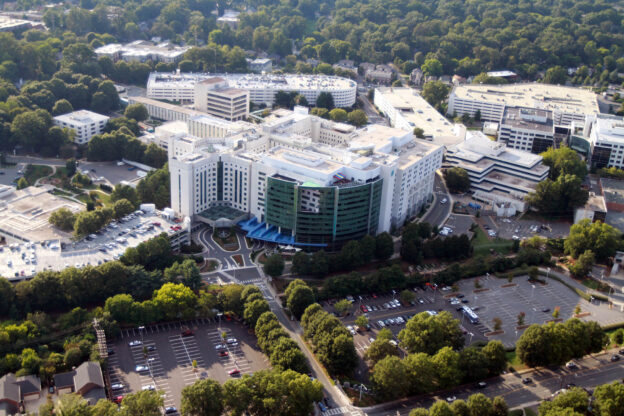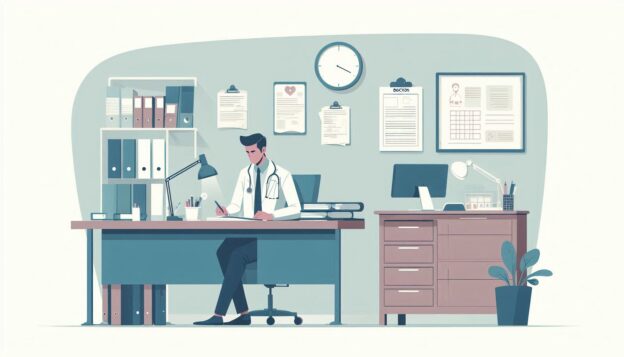Neurosurgeons scarce in Palm Beach County due to legal climate

By Patty Pensa | South Florida Sun-Sentinel
http://www.sun-sentinel.com
When voters told physicians, “Three strikes, you’re out,” Dr. Douglas Martin cautiously pulled back. He dropped his malpractice insurance and cut his practice to three half days a week.
“The rest of the time, I trade stocks,” said Martin, a neurosurgeon for almost 30 years. “It’s actually more successful.”
For Martin, the 2004 voter-approved constitutional amendment was a turning point. Designed to weed out bad doctors, the law revokes their medical licenses after three malpractice judgments. But neurosurgeons such as Martin saw it as another blow to their profession.
In Palm Beach County and around much of the state, neurosurgeons are becoming increasingly scarce. Among specialists, they pay the highest rates for malpractice insurance, yet reimbursements for the care they provide are low. Working on call — when patients can need them most urgently — is considered risky.
Patient care could suffer as the number of neurosurgeons working in hospital emergency departments drops. Efforts to solve the problem are advancing at the local and state level, but an immediate turnaround is not expected.
“There’s a reason for real concern in our community,” said Tenna Wiles, chief executive officer of the Palm Beach County Medical Society, which has been addressing the issue. “This is a highly complex level of medicine, and there’s a higher concern about liability.”
The courtroom has taken center stage in recent years as the number of neurosurgeons dips to a shortage. The shortfall in Palm Beach County appears in the ER: 13 of 22 neurosurgeons work on call now, but estimates say 18 are needed for the county’s population of 1.3 million.
Aging doctors and the lack of new recruits have produced shortages in several specialties, including family doctors, hand surgeons, neurosurgeons and obstetricians-gynecologists. As older doctors retire, the county will be left with 14 neurosurgeons in three years. Seven will work on call though 20 will be needed, according to a medical society study.
The effect on patients is clear: Care is delayed, whether in the office or the ER.
Sam Stone, of Tequesta, had no idea how difficult it would be to find a neurosurgeon when his wife of 30 years, Mary, had a stroke in 2003. Eleven hours after she was diagnosed at Jupiter Medical Center, Mary Stone was sent to Shands at the University of Florida in Gainesville, nearly 260 miles away.
She died 10 days later at age 52. Sam Stone sued and recently settled with Jupiter Medical Center, though he and the hospital would not disclose the terms.
“I was totally ignorant of the situation before it happened,” said Stone, 61. “Even though I settled with the hospital, I’m still a little bit angry that the situation was allowed to occur in the first place and that it’s been allowed to continue.”
For almost two years, a group of surgeons and hospital administrators explored solutions to bringing much-needed specialists such as neurosurgeons and hand surgeons into the ER. The regional approach — with patients sent to hospitals where specialists are known to be on call — requires state and federal approval. With antitrust concerns a major hurdle, progress has been slow.
Solutions also are being sought statewide, where shortages are felt to varying degrees. The answer, many in the medical community say, is protecting doctors from frivolous malpractice lawsuits.
The American Association of Neurological Surgeons is pushing for legislative change so Florida would mirror Texas and California, where “pain and suffering” payouts are capped at $250,000. Texas’ three-tiered system allows plaintiffs to collect $250,000 each from the at-fault physician, hospital and other health care entities.
“Otherwise, the sky’s the limit,” said Dr. Troy Tippett, a Tallahassee neurosurgeon and the association’s vice president. “Without some restraint, the system is going broke and neurosurgeons are ordering more tests as defensive medicine.
“Places like Palm Beach County are already in crisis.”
The Legislature in 2003 passed a $150,000 cap on “pain and suffering” for emergency patients and a $500,000 cap for all other patients. When a patient dies, though, plaintiffs can collect up to $1 million or $1.5 million, depending on the case.
The constitutionality of those caps has yet to be tested. Plaintiffs’ attorneys generally oppose the caps, saying they strip jurors of the right to determine awards on a case-by-case basis.
“It should depend on the circumstances of the case, not on some arbitrary cap decided by the Legislature,” said Gary Cohen, a trial lawyer who represented Sam Stone.
The law has resulted in fewer cases being filed, partly because plaintiffs’ attorneys are unwilling to try the cases. Medical malpractice insurers have returned to the state, and premiums have dropped slightly. Neurosurgeons still pay the highest malpractice insurance rates, at about $96,000 for $250,000 of coverage per claim and $750,000 total for claims annually.
Physicians say Florida didn’t go far enough. Texas is heralded as a model for the changes it also passed in 2003. Since then, the state has tallied some tangible results: More than 3,300 new doctors received licenses in 2007, double the number prior to the caps. So many doctors want to practice in Texas that the state’s medical board got money from the Legislature to process licenses quicker.
Texas also has added 26 neurosurgeons since 2003, according to the Texas Medical Society. Before the caps, neurosurgeons were opting out of ER call schedules and limiting their practices — just as they are Palm Beach County now. Martin, the neurosurgeon who works part-time, was the victim of a frivolous lawsuit. The 1990 case centered on a patient, William Lenahan, who claimed the back surgery Martin performed left him paralyzed and with dementia.
After a jury awarded more than $2 million, Martin hired a private investigator who videotaped Lenahan climbing stairs, lifting luggage and dancing. Lenahan and his wife were later convicted of grand theft and ordered to pay back much of the money. The case was featured on The Oprah Winfrey Show.
“Every bad result is not malpractice,” Martin said. “There are some legitimate cases, but I can’t imagine a doctor trying to harm anyone. … Doctors are becoming afraid of the system. Why do you think medicine is so expensive?”
see original





